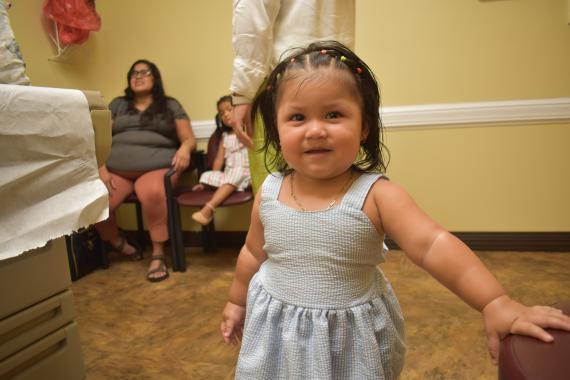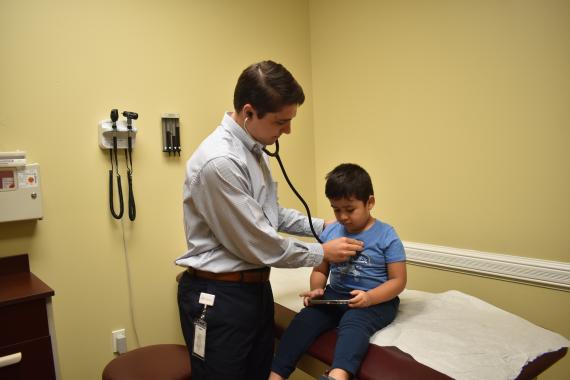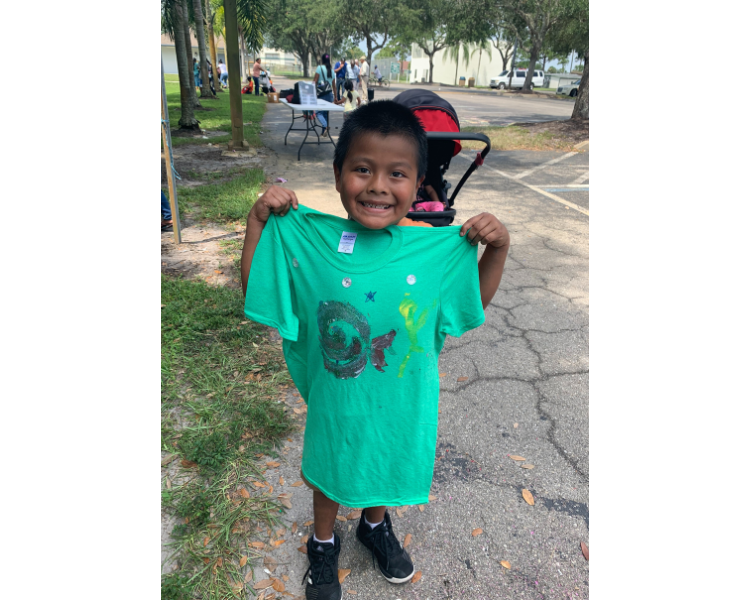Farmworker Infants' Environmental and Life Development Study
Objective
The primary objective of this study is to document the cumulative impact of young children’s (ages 0-30 months) low-dose chronic exposure to chemical exposures, along with intergenerational (non-chemical) traumatic stressors, on neurobehavioral development and related health outcomes. The study aims to achieve this through a prospective birth cohort study, collecting primary data on chemical and nonchemical environmental stressors (CES and NCES) in rural agricultural communities – starting in Immokalee, Florida.
Research Significance
The first 1,000 days of life are critical for growth and development, affecting lifelong health. Neurodevelopment is particularly vulnerable to external factors such as emotional deprivation, infection, and CES and NCES exposures, which can lead to irreversible conditions like learning disabilities, autism, and ADHD. This study is significant as it addresses the need to understand the combined effects of CES and NCES on child development and health, particularly in underserved, rural agricultural communities. The findings will inform public policy and healthcare practices to promote optimal health during this critical period.
Key Research Area
- Cumulative Effects of CES and NCES: The study will document the cumulative effects
of chemical and nonchemical environmental stressors on children’s neurobehavioral
development and health outcomes from birth to 30 months. - Microbiome Acquisition: The study will delineate variation in early-life microbiome
acquisition attributed to exposure to CES and NCES and its links to health outcomes,
growth, and development. - Mechanisms of Impact: The study will explore whether microbiome acquisition is a
viable mechanism for linking additive and synergistic exposures to CES and NCES to
variation in children’s neurobehavioral development and health outcomes.
Chemical Stressors of Interest
- Pesticides:
- Organophosphate
- Pyrethroid
- Neonicotinoid (e.g., clothianidin, imidacloprid, thiamethoxam)
- Organochlorine
- Heavy Metals:
- Lead
- Mercury
- Arsenic
- Air Pollution:
- Fine particulate matter (PM 2.5)
- Coarse particulate matter (PM 10-2.5)
- Other Chemical Exposures:
- Various insecticides, herbicides, and fungicides
- Contaminants in water (e.g., pesticide compounds or their degradants)
Non-Chemical Stressors Of interest
- Adverse Childhood Experiences (ACEs):
- Parental verbal abuse
- Child maltreatment
- Economic hardships
- Parent divorce/separation
- Intergenerational Traumatic Stressors:
- Family history of trauma or adversity
These stressors are being studied to understand their cumulative impact on children's
neurobehavioral development and health outcomes. If you need more details or have any
questions, feel free to ask!
Approach
- Data Integration and Analysis
The study will integrate data from multiple sources, including surveys, biological specimens, and
environmental samples, to comprehensively assess the impact of chemical and nonchemical
environmental stressors (CES and NCES) on children's health. Data analysis will involve:- Longitudinal Cohort Design: Following a cohort of 120 mother-child dyads over 30 months, with six assessment points.
- Mixed Effects Models: To account for dependencies due to clustering of children within physical locations and repeated measurements of the same individual.
- Microbiome Analysis: Using advanced statistical and machine learning techniques to analyze microbiome data and its association with CES and NCES exposures.
- Correlation and Mediation Analyses: To explore relationships between exposures, microbiome changes, and health outcomes.
-
Health Outcome Focus
The primary health outcomes of interest include:
- Neurobehavioral Development: Assessing cognitive, social-emotional, and motor development using validated instruments.
- Physical Health: Monitoring growth parameters (e.g., height, weight, head circumference) and health conditions (e.g., asthma, obesity).
- Microbiome Health: Evaluating the composition and diversity of the gut microbiome and its potential role in mediating the effects of CES and NCES on child health.
- Data Sources and Methodology
- Surveys:
- CCSH ACE Questionnaire: To assess maternal and child exposure to adverse childhood experiences (ACEs).
- HARK Intimate Partner Violence Questionnaire: To evaluate maternal exposure to intimate partner violence.
- Edinburgh Postnatal Depression Scale: To screen for maternal postnatal depression.
- Ages and Stages Questionnaire (ASQ): To measure child development across multiple domains.
- Modified Checklist for Autism in Toddlers (M-CHAT): To screen for autism symptoms.
- Biological Specimens:
- Urine Samples: Collected from mothers and children to measure pesticide
compounds and metabolites. - Hair Samples: Collected from children to assess long-term exposure to
pesticides. - Stool Samples: Collected from children to analyze the gut microbiome.
- Urine Samples: Collected from mothers and children to measure pesticide
- Environmental Samples:
- Household Dust: Wipe samples from living and sleeping areas to measure pesticide residues.
- Air Quality: Indoor and outdoor air sampling using PurpleAir PA-II-FLEX
devices to measure particulate matter (PM2.5). - Water Samples: Collected from household faucets to assess contamination levels.
- Medical Records:
- Demographic Information: Age, insurance type, ethnicity/race,
farmworker/occupation status. - Laboratory Test Results: Hemoglobin, lead levels, etc.
- Health Records: Diagnosed conditions, medication lists, growth measurements.
- Demographic Information: Age, insurance type, ethnicity/race,
This comprehensive approach will provide a robust dataset to understand the cumulative impact of CES and NCES on child health and development, informing public policy and healthcare practices to improve outcomes for children in rural agricultural communities.
- Surveys:





